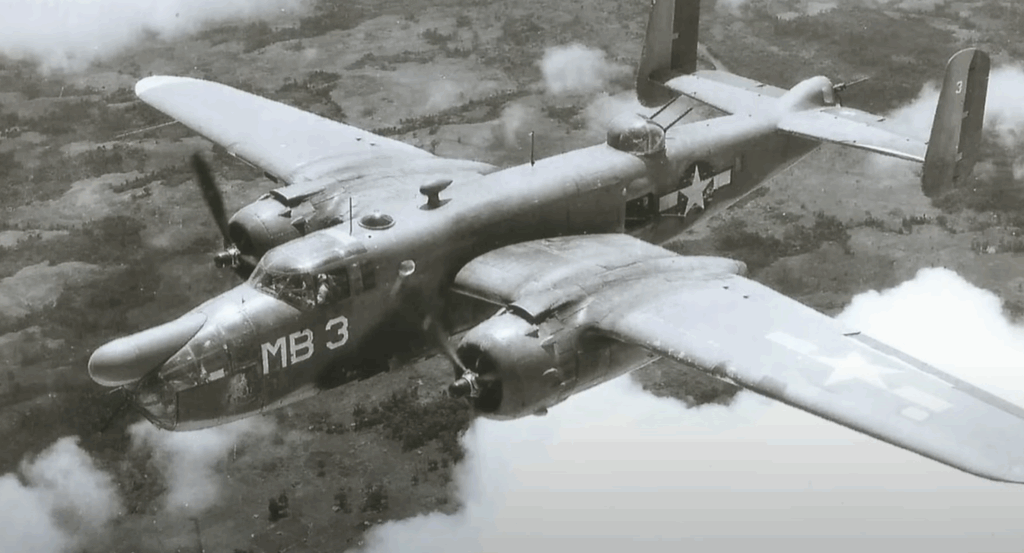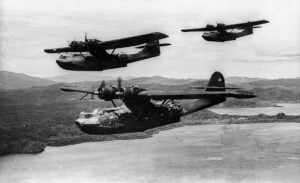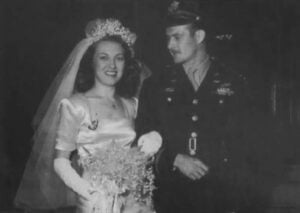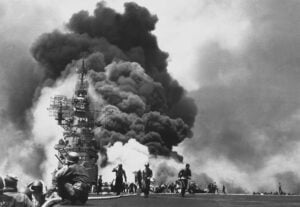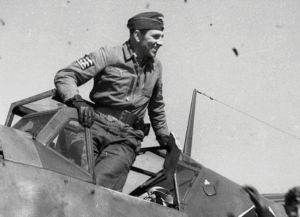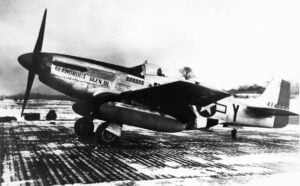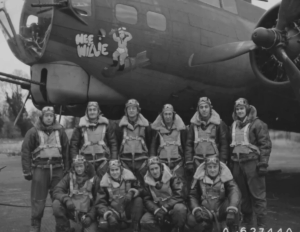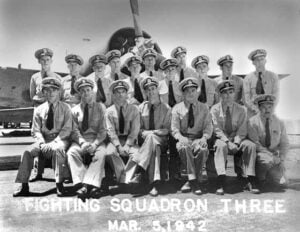How U.S. Marine PBJ-1D Bombers Dominated the Night War Against Japan During WWII
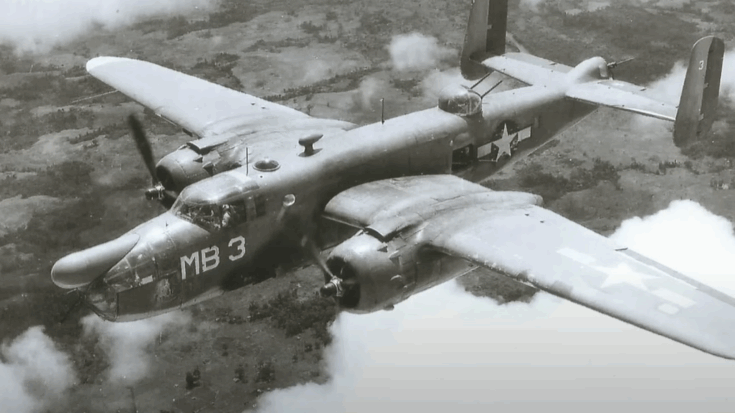
WWII Battlefield Memoirs / YouTube
Turning the Night into a Battlefield
In the later years of World War II, the night skies over the Pacific became the stage for a new kind of warfare. The U.S. Marine Corps took to the air in PBJ-1D bombers—modified versions of the Army’s B-25 Mitchell—to strike Japanese targets under cover of darkness. These aircraft were fitted with a revolutionary tool: airborne radar. What had once been a quiet, moonlit shield for Japanese convoys soon turned into a hunting ground for American pilots who could now see through the night.
Radar was still a new science in 1944, and few understood its potential. Mounted on the nose or side of the PBJ, the radar set allowed crews to detect ships, islands, or coastlines hidden by darkness or weather. This transformed the bomber into a night hunter. The Marines combined this technology with new weapons—5-inch rockets that could sink small ships or destroy coastal positions. Together, radar and rockets made the PBJ a weapon of surprise and precision.
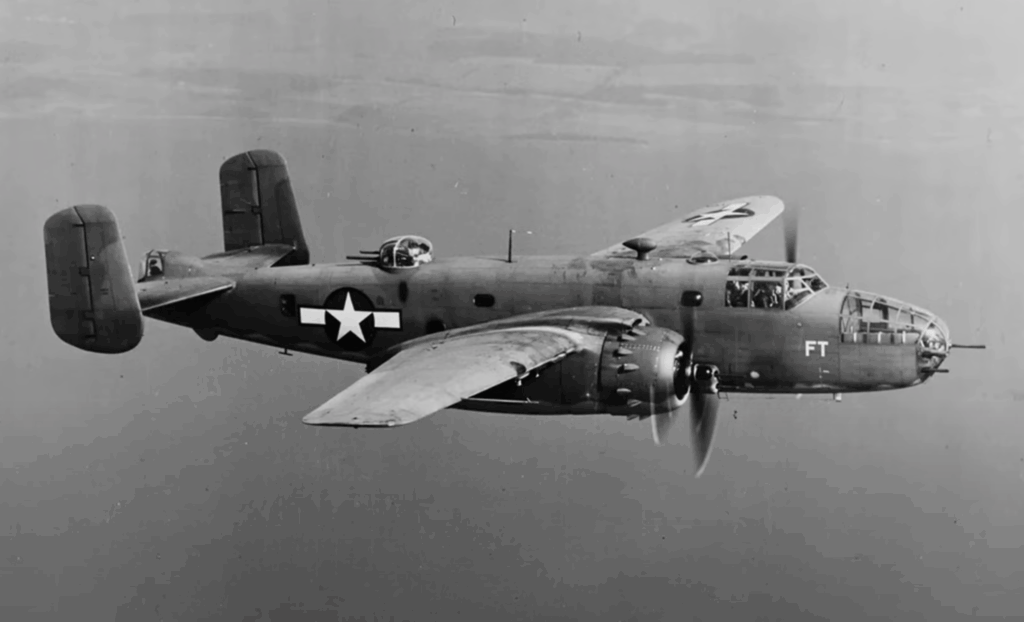
From Daylight Raids to Night Strikes
The PBJ had the same roots as the famous B-25 that had carried out the Doolittle Raid in 1942. But the Marines used it differently. By 1944, as the U.S. advanced through the Central Pacific, the Japanese were relying more on night convoys to move supplies between their islands. American daylight attacks were devastating, but limited by visibility. The PBJ crews trained to fight when the enemy least expected it—at night.
These missions were smaller than large-scale daytime raids. Each involved only a few bombers flying low over open ocean, guided by radar and instinct. Crews spent long hours studying radar screens and interpreting the faint blips that might represent ships or coastlines. Flying in darkness meant complete dependence on instruments and teamwork. A single mistake could mean missing the target—or never making it back to base.
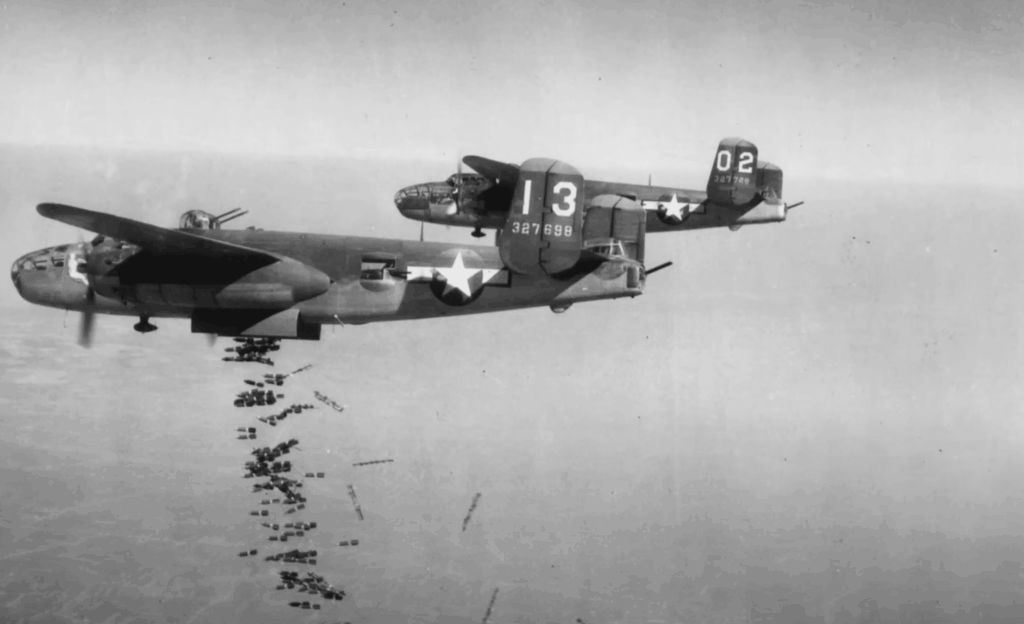
Inside the Cockpit
Life aboard a PBJ during a night mission demanded patience and nerve. Pilots flew blind except for the faint glow of gauges. Navigators traced bearings with pencils and rulers while radar operators interpreted ghostly echoes on their screens. The entire crew had to trust the machine and one another. When radar detected a ship, the pilot descended low, closing in unseen. Once within range, they unleashed rockets in bright arcs that split the night sky, followed by explosions lighting up the waves.
Japanese convoys were often taken by surprise. Ships zigzagged frantically as bombs and rockets crashed around them. Even when attacks caused little damage, the shock was enough to scatter formations and delay vital shipments. For the Marines, disrupting Japanese supply lines was as valuable as sinking ships. Every lost convoy meant fewer resources reaching island garrisons already struggling under blockade.
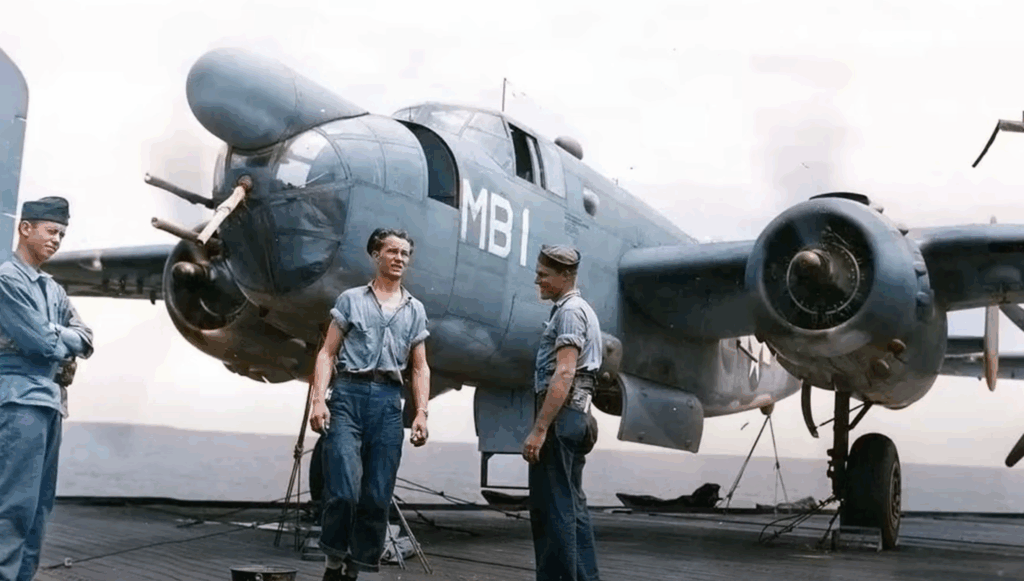
A New Form of Combat
The PBJ missions marked a shift in how war was fought. Instead of massive formations or daylight bombing runs, these were quiet, surgical strikes relying on stealth and innovation. The Marines experimented with new tactics—some aircraft used radar to guide others, while some dropped flares to illuminate convoys for precise attacks. Each operation tested new methods that would influence postwar aviation and radar combat.
Conditions at the forward bases were harsh. The airstrips were carved from coral or jungle, and crews lived in tents plagued by insects and heat. Yet morale remained high. The Marines understood they were part of something new—a technological leap that would change warfare. As 1945 approached, PBJ squadrons continued to operate from the Philippines and Okinawa, targeting convoys and small airfields. Each mission eroded Japan’s ability to fight and revealed a deeper truth: innovation could alter the course of war as much as strength or numbers.
Through radar, training, and courage, the Marines flying PBJ-1Ds turned night—once a shield for Japan—into an ally for America.
